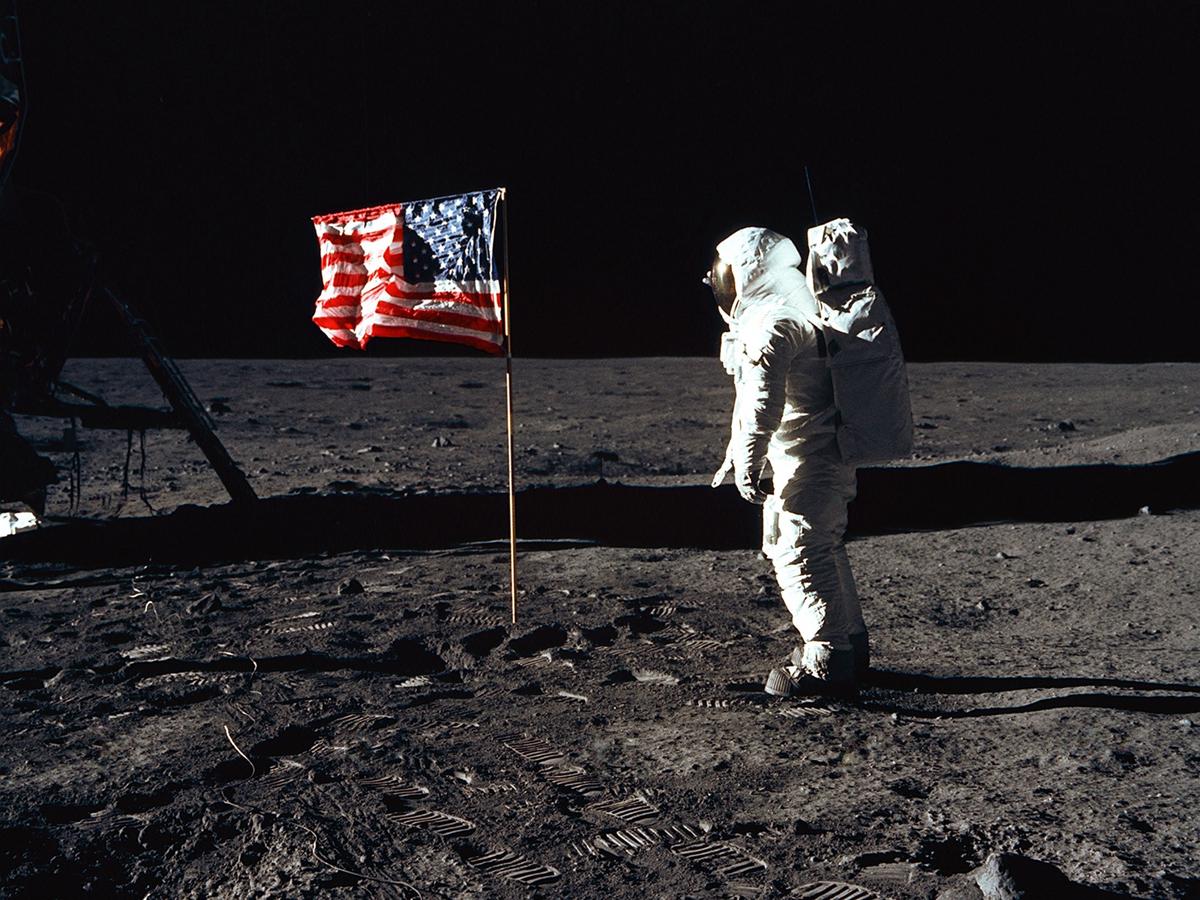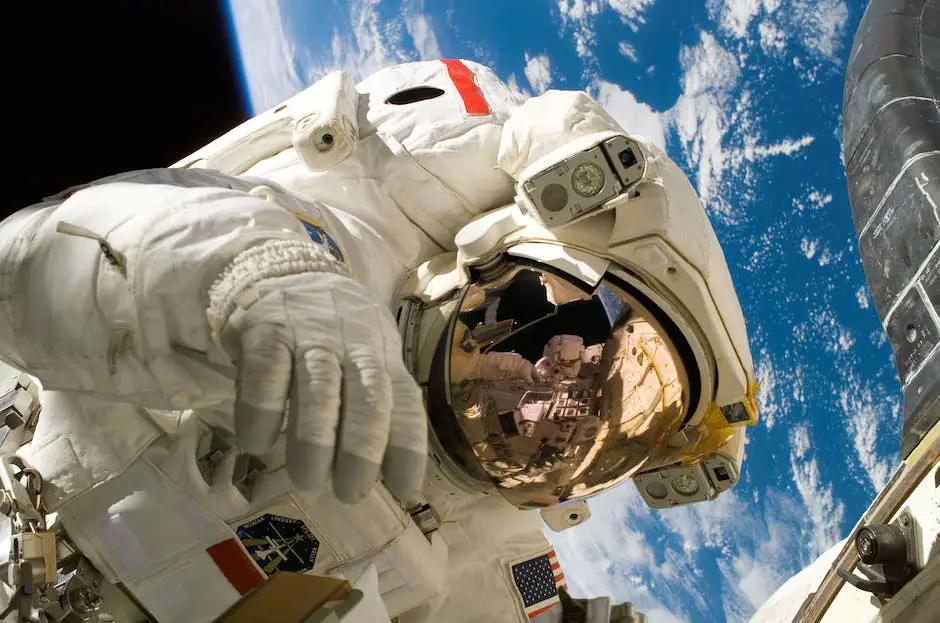The NASA Apollo Missions Legacy Program stands as one of the most monumental ventures in the annals of human history. During the height of the Cold War, amidst an atmosphere thick with political tension and scientific curiosity, this bold initiative aimed no less than the Moon itself.
The birth of the Apollo Program, on a backdrop of international competition and fascination with the unknown, propelled humankind into a new era of space exploration.
The program’s significant milestones tell tales of tragedy, triumph, innovation, and discovery, painting a vivid portrait of our journey beyond Earth’s atmosphere. This exploration into the Apollo missions will delve into the objectives, difficulties, and eventual outcomes of this daring venture.
Contents
The Birth of the Apollo Program
The Birth of the Apollo Program
The Apollo program was launched by NASA – the National Aeronautics and Space Administration – in 1961 with the main objective to land a man on the moon.
The Apollo program roots go back to President Dwight D. Eisenhower’s creation of NASA in 1958. Yet, the impetus jumpstarted in May 1961, when then-President John F. Kennedy made a startling announcement before a special joint session of Congress.
His bold vision: “I believe that this nation should commit itself to achieving the goal, before this decade is out, of landing a man on the moon and returning him safely to Earth.”
This audacious declaration came at a significant time in history, marked by the intense competition and tension between two world superpowers: the United States and the Soviet Union. The space race, a critical front of the Cold War, was in full swing.
The Political and Scientific Context
Sputnik, the world’s first artificial satellite launched by the Soviet Union in 1957, had sent shockwaves through American society. The feat underscored the Soviet Union’s superior technological prowess. Followed by Yuri Gagarin’s orbital flight in 1961, the United States felt an urgent need to eclipse Soviet achievements to maintain its standing on the global stage.
From a scientific perspective, the Apollo program represented a vast leap in human understanding of outer space. It created synergies of quantitative scientific methods and cutting-edge technologies to achieve the unthinkable: landing a man on the moon. At the core was the Saturn V rocket, a behemoth standing 363 feet tall, taller than the Statue of Liberty, and producing 7.6 million pounds of thrust.
Conception and Public Reception
While the inception of the Apollo program was met with a myriad of reactions, there was a definitive consensus about the program’s significance and inherent daring. Critics viewed it as an extravagant pipe dream, a colossal waste of resources that could have been spent on problems closer to home.
On the other hand, proponents saw the Apollo missions as a pathway to establishing American supremacy in space, staking a claim in a new domain, proving technological superiority, and inspiring a whole generation of scientists, engineers, and ordinary citizens.
Among the key players in the Apollo program were prominent figures like Wernher von Braun, Robert R. Gilruth, and George E. Mueller. These men played a vital role in project management, rocket design, and overall orchestration of the massive scientific endeavor.
The Indelible Mark of the Apollo Program
Through undeniable innovation, collaboration, and perseverance, the Apollo program radically recrafted our understanding of our position in the cosmos. Despite confronting grave challenges and setbacks, the program succeeded in making an indelible mark on human history and exploration.
Undoubtedly, the Apollo program remains one of NASA’s most renowned achievements, illustrating the incredible triumphs that can be attained through human brainpower and resilience.

Photo by adamthehooligan on Unsplash
Major Milestones in the Apollo Missions
The Apollo 1 Catastrophe
The Apollo 1 mission, initially dubbed AS-204, faced a grievous tragedy in January 1967 during a test run prior to lift-off. When the command module was on the launch pad, an abrupt and ferocious fire broke out within the module, resulting in the tragic loss of the three astronauts aboard, Gus Grissom, Edward H. White, and Roger Chaffee.
This devastating incident instigated comprehensive alterations in the design of Apollo spacecraft, addressing and correcting serious safety hazards such as the use of easily inflammable materials, faulty wiring, and inadequate hatch design.
The Successful Apollo 8 Lunar Orbit
Apollo 8 was a monumental milestone as being the first manned spacecraft to leave Earth’s orbit, reach the moon, orbit it and return safely to Earth in December 1968. It marked a significant milestone for NASA as they were able to broadcast images of the Earth and moon for the first time.
The three astronauts, Frank Borman, James Lovell, and William Anders orbited the moon ten times in approximately 20 hours. This mission verified critical mission procedures and operations that were necessary for the follow-up Apollo 11 lunar landing.
The Iconic Apollo 11 Moon Landing
The Apollo 11 mission made history by achieving the primary objective set by President Kennedy in 1961 – landing a man on the moon and returning him safely to Earth. On July 20, 1969, astronauts Neil Armstrong and Edwin (Buzz) Aldrin became the first humans to land on the moon while Michael Collins orbited overhead in the Apollo Command Module. Armstrong’s famous quote, “That’s one small step for a man, one giant leap for mankind,” marked the significant milestone.
This mission utilized several technologies for the first time, like the lunar module, and marked the beginning of human exploration beyond Earth’s orbit.
Difficulties Faced During the Apollo 1 – 11 Missions
Each Apollo mission had its challenges. For Apollo 1, the tragic loss of life was a painful reminder of the risks involved in space exploration. Apollo 8 faced the challenge of journeying farther from the Earth than anyone had before, with the crew and mission team making critical decisions in real-time to navigate and orbit the Moon.
Apollo 11 faced what is likely the most significant technical challenge in the history of human exploration – landing on the moon and taking off again to rendezvous with the command module in lunar orbit. Neil Armstrong and Buzz Aldrin faced 13 minutes of communication blackout during their descent to the Lunar surface. Redesigning and troubleshooting for these unexpected issues became a regular part of the Apollo missions.
Apollo Missions: Achievements and Enduring Significance
The awe-inspiring accomplishment of the Apollo missions, which included successfully landing astronauts on the moon and returning them to Earth, was a dramatic demonstration of American technological strength. More than just national triumphs, these missions stand as landmarks in the history of human exploration.
By conquering the lunar surface, we opened the gateway to further space explorations with even more ambitious goals, such as reaching Mars. Though the journey was far from smooth, with numerous challenges encountered and some poignant losses endured, the Apollo missions remain a highly celebrated chapter in the annals of space exploration.

Innovations and Discoveries from Apollo
Technological Breakthroughs from the Apollo Missions
The Apollo missions, carried out by NASA from 1961 to 1972, catalyzed the development of a multitude of technologies and scientific knowledge that still influence our lives on Earth and ongoing space exploration endeavors. The path to the moon was fraught with challenges, necessitating a spate of technological innovations and incredible feats of engineering.
Among the notable triumphs was the trailblazing navigational technology that NASA pioneered. This involved the use of stellar inertial navigation, a system that leverages the positions of stars to ascertain the spacecraft’s latitude, longitude, and altitude. This breakthrough technology granted astronauts the vital ability to be aware of their exact location in space and independently navigate their crafts, without which the lunar landings would not have been possible.
The Apollo Guidance Computer (AGC) is another technological marvel that emerged from these missions. Conceived to autonomously steer and navigate spacecraft, the AGC was a marvel of miniaturization and resilience for its era and has thus earned its distinguished place in the history of space technological advancement.
Apollo Missions and the Innovation of Spacesuits
The Apollo missions also led to critical advancements in spacesuit technology that were essential for astronaut survival. The A7L Spacesuit used in Apollo missions was specially designed to protect astronauts from the harsh lunar environment, maintain life functions, and provide mobility for tasks including collecting samples and deploying instruments.
These spacesuits showcased NASA’s commitment to innovative design and safety, nourishing the development of future space attire used in various space missions.
Scientific Discoveries from Apollo Missions
In addition to the technological miracles, the Apollo mission also led to significant scientific discoveries. Astronauts returned with 842 pounds of lunar samples, providing an unprecedented opportunity for scientists to study the Moon’s composition, geology, and origins.
For example, these lunar studies led to the discovery that the Moon and Earth share a common history and that it solidified from a molten mass over four billion years ago – a process now referred to as the Lunar Magma Ocean. Analysis of the lunar rocks also provided insights into the Moon’s lack of a significant magnetic field and helped verify theories of internal lunar structure, among other things.
Solar Wind Experiment
Furthermore, the Apollo missions confirmed the existence of solar wind – the continuous stream of charged particles from the sun. Before the Apollo missions, scientists suspected the existence of solar wind, but Apollo’s Solar Wind Composition Experiment provided the first direct measurement of the phenomenon. This discovery has since become essential in understanding the Sun’s influence on space weather and its impact on telecommunication systems on Earth.
Wrapping Up
In wrapping up, the Apollo missions were much more than simply landing humans on the moon. They acted as a catalyst for subsequent technological and scientific breakthroughs.
Innovations in fields such as lunar geology, spacesuit design and navigational technologies were all inspired by these missions, having a profound impact and providing the necessary tools and knowledge for future and ongoing space exploration missions.

The Lasting Impact and Legacy of Apollo
Assessing the Impact and Legacy of NASA’s Apollo Missions
The Apollo missions spearheaded by NASA, between the years 1961 to 1972, leave an unfading imprint on our understanding of the universe, space exploration, and scientific study.
Beyond the astronauts’ footsteps on the lunar surface, these missions influenced subsequent space explorations and led to critical scientific findings, and technological advancements, and engendered shifts in society’s perception of our place in the universe.
Space Exploration: Expanding the Realm of the Possible
One of the most profound effects of the Apollo missions was establishing the feasibility of manned space exploration. Apollo 8, for instance, marked the first time humans had left Earth’s orbit and travelled towards another celestial body, while Apollo 11 remarkably fulfilled President John F. Kennedy’s ambitious challenge of landing a man on the moon and returning him safely to the Earth.
These feats sparked a new era of space exploration, opening doors for further visits to the moon via Apollo 12, 14, 15, 16, and 17, and setting the stage for future interplanetary missions. Building on Apollo’s legacy, NASA has since pursued more complex missions, such as the Mars Rover missions or the Voyager probes that explore the outer planets and beyond.
Scientific Discoveries and Technological Developments
The Apollo missions also provided significant scientific insights. The moon rocks brought back by Apollo astronauts offered invaluable information about the moon’s composition and geological history.
Moreover, the development of the massive Saturn V rocket, the Lunar Module spacecraft, and the Apollo Guidance Computer represented major technological achievements. Many of these advancements had wide-ranging impacts beyond space exploration. For instance, the miniaturization of computer circuits developed for the Apollo Guidance Computer paved the way towards the development of modern computers and smartphones.
Cultural Shift and Public Inspiration
The Apollo moon landings fundamentally redefined humanity’s understanding of its place in the universe, capturing global public imagination and interest. Millions of people watched on their television screens as Neil Armstrong stepped onto the moon’s surface, uttering his now-iconic phrase: “That’s one small step for man, one giant leap for mankind.”
This widely televised event not only highlighted the reality and potential of space travel but also deeply influenced popular culture. The moon landings have been reflected in various forms of media, including films, books, and music, inspiring a sense of wonderment and curiosity about space and our relationship to it.
The lasting impact of the Apollo missions is broadly evident in the spheres of space exploration, scientific research, technological development, and cultural consciousness.
Not only did the Apollo program revolutionize our knowledge of the moon and space travel, but it also ignited a global fascination with the cosmos and created a strong foundation for future astronomical explorations.

Embarking on a journey of unravelling the mysteries veiled by the cosmos, NASA’s Apollo missions catalyzed an era of space exploration and technological advancement that still resonates today.
The profound impact of these missions, stemming from innovations, discoveries, and human persistence, reverberates through the pillars of scientific knowledge and cultural significance.
From breakthroughs in lunar geology and astronomy to the surges in space technology, the Apollo series fundamentally reshaped our understanding of the universe. The enduring legacy of the Apollo missions continues to inspire the pursuit of knowledge, confirming that the spirit of human discovery is as boundless as the cosmos itself.

With a passion for unraveling the mysteries of the moon, Dr. Luna Sterling is a highly-respected astrophysicist, a dedicated lunar enthusiast, and a captivating blogger. After earning her Ph.D. in Astrophysics from the Massachusetts Institute of Technology (MIT), she served as a lead scientist and mission planner for NASA, contributing significantly to various lunar missions.
For over two decades, Luna has been at the forefront of lunar science, pushing boundaries and pioneering discoveries that have enriched our understanding of the moon’s geological history. However, it’s her infectious enthusiasm for all things lunar that truly sets her apart.
In an endeavor to bring the moon closer to everyone, Luna started her blog, “Luna’s Lens: A Closer Look at the Moon.” With this platform, she offers a unique blend of intriguing moon facts, updates on lunar missions, and personal anecdotes from her experiences in the field, all told in an engaging and accessible manner.
Luna’s unique blend of scientific expertise and warm, humorous writing style has transformed complex astrophysics into compelling narratives that captivate her audience. As a gifted communicator, she leverages her knowledge and experience to relate scientific facts to everyday life, thus making her blog a must-read for both seasoned space enthusiasts and curious newcomers.
Interactive and inviting, Luna frequently encourages reader engagement through thought-provoking discussions and a monthly ‘Ask Dr. Luna’ feature, where she personally answers questions about the moon and space exploration. A celestial storyteller at heart, Dr. Luna Sterling’s passion for the moon is as vast as the cosmos she explores, making her an invaluable beacon in the world of lunar science.
